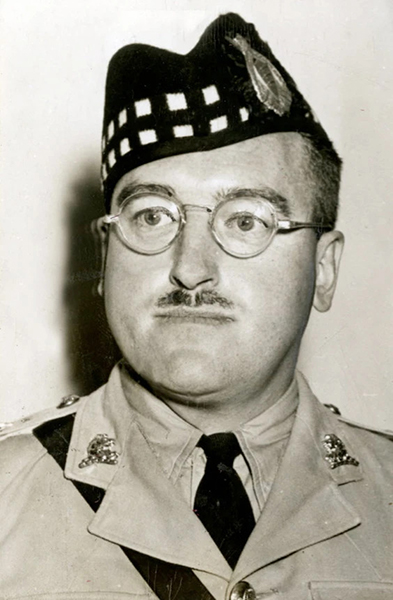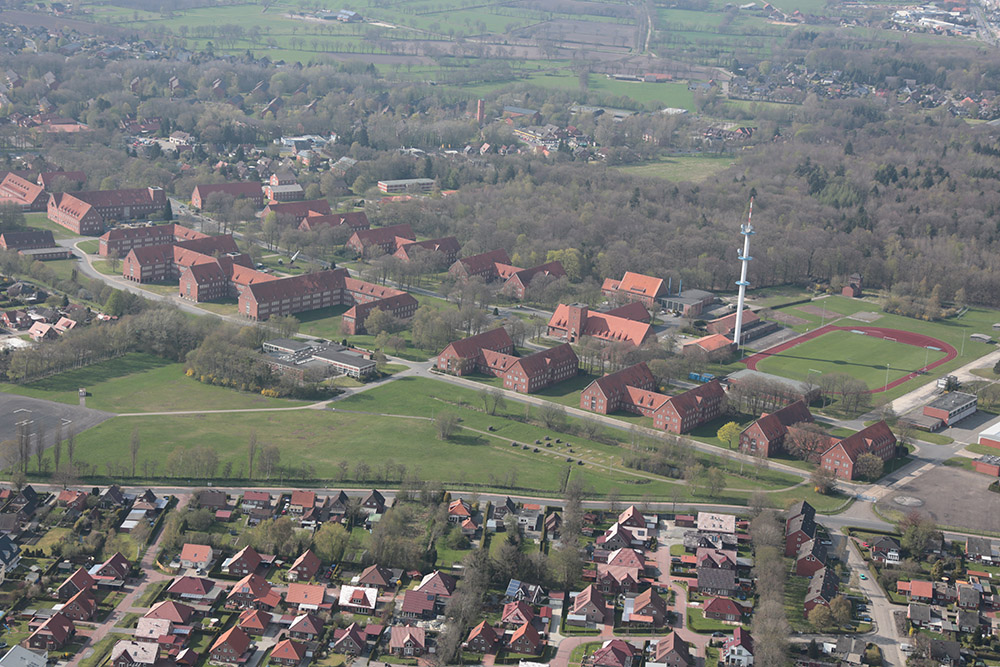Macdonald, Bruce John Stewart
- Date of birth:
- December 2nd, 1902 (Rose Bay/Nova Scotia, Canada)
- Date of death:
- June 2nd, 1986 (Windsor/Ontario, Canada)
- Nationality:
- Canadian
Biography
Macdonald earned his law degree from the University of Alberta in 1926 and completed graduate studies at Harvard Law School in 1927. He moved to Windsor, Ontario, joining the law firm of Norman A. McLarty and Gordon L. Fraser. In 1930, he became Windsor’s first city solicitor and played a key role in amalgamating Windsor with Walkerville, East Windsor, and Sandwich. He resigned in 1937 to return to private practice.
Macdonald joined the Essex Scottish Regiment in 1929 and served as a company commander during WWII. He narrowly missed the devastating Dieppe Raid in 1942, which decimated the regiment. Promoted to second-in-command, he succeeded Lt.-Col. John Mothersill in May 1943.
On 20 July 1944, during Operation Atlantic, Macdonald’s leadership was tested at Verrières Ridge. Brigadier H.A. Young blamed him for heavy casualties and dismissed him for “nerves and insubordination.” Macdonald countered that poor planning and contradictory orders undermined the attack. The Essex war diary supported his view, citing sleep deprivation, inadequate meals, and poor communication. Young’s brigade diary, however, described Macdonald as “excited and nervous,” prompting his replacement by Major T.S. Jones.
Macdonald protested his removal in a letter to General Charles Foulkes, attributing his demeanor to frustration rather than fear. Though his appeal failed, he was reassigned to the Supreme Allied Expeditionary Force headquarters, where he led war crimes investigations.
By spring 1945, Canadians knew of atrocities committed against their soldiers, but the government lacked the infrastructure for large-scale investigations. Most officials preferred British oversight. Macdonald, however, warned that British forces wouldn’t pursue justice for Canadian victims. He lobbied Canadian Military Headquarters and General Harry Crerar, leading to the creation of the No. 1 Canadian War Crimes Investigation Unit (CWCIU) on 4 June 1945.
Macdonald’s first major target was SS Brigadeführer Kurt Meyer, accused of ordering the murder of Canadian POWs at Ardenne Abbey.
To connect Meyer to the killings, Macdonald’s team interviewed over 100 witnesses across POW camps in North America. Many SS soldiers remained loyal or evasive. In August 1945, new Canadian legislation made commanders liable for their troops’ war crimes, strengthening Macdonald’s case.
The trial began on 10 December 1945 in Aurich, Germany. Macdonald faced setbacks: missing witnesses, intimidation tactics from Meyer, and skepticism toward Macdonald's lead witness.
On 27 December, Meyer was convicted on three of five counts and sentenced to death. The sentence was later commuted to life imprisonment, sparking outrage in Canada. Macdonald believed his intervention ensured Meyer wasn’t released outright, but he was disillusioned by the lack of broader accountability.
Despite Macdonald’s efforts, the CWCIU was dissolved in May 1946 after only a handful of trials. Many cases were abandoned, and crucial evidence—like forensic materials from the Ardenne Abbey killings—was lost. Macdonald had warned that the unit’s premature closure would leave justice incomplete.
Meyer was repatriated to Germany in 1951 and released in 1954.
After the war, Macdonald resumed his legal career, becoming crown attorney for Essex County in 1951. He served as an Ontario court judge from 1961 to 1977, then as a small claims judge until his death in Windsor on 2 June 1986.
From 1951 to 1969, Macdonald lived in a Windsor home later known as Iona College, part of the historic “Judge’s Row.”
Do you have more information about this person? Inform us!
- Period:
- Second World War (1939-1945)
- Awarded on:
- 1942
- Period:
- Second World War (1939-1945)
- Rank:
- Lieutenant-Colonel
- Awarded on:
- August 30th, 1945
- Period:
- Second World War (1939-1945)
- Rank:
- Lieutenant-Colonel
- Awarded on:
- September 23rd, 1946
With star






